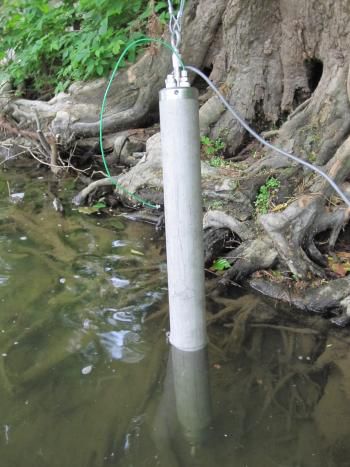Device for Tracing Harmful Chemicals in water
Published on by Naizam (Nai) Jaffer, Municipal Operations Manager (Water, Wastewater, Stormwater, Roads, & Parks) in Academic
Every hour, a multitude of chemicals complete their use life in homes, agricultural fields and industries and flood into the environment.
The ultimate fate of these compounds is often poorly understood, as are the risks they may pose to humans and the ecosystems that are essential for our survival as a species.
In a new study, a multi-disciplinary, multi-institutional team of researchers headed by Rolf Halden, director of the Center for Environmental Security at Arizona State University’s Biodesign Institute, tracks the course of a family of widely used pesticides known as fiproles. These halogenated chemicals have been identified as an emerging contaminant, recently linked to the worldwide die-off of pollinating insects, particularly honeybees.
To properly assess the levels of fiprole contamination in the environment, Halden’s team invented a new device, constructed at the Biodesign Institute. Known as the IS2B, the tool is a kind of mobile laboratory or pod for performing precision analysis on sampled water and sediment. The technology offers improved accuracy of measurement compared with existing methods as well as greater versatility and cost-effectiveness.
“Health risks from pollution are dependent not necessarily on the absolute quantity of toxins present but rather on what fraction of the total pollutant mass is accessible for uptake by living organisms. The patent-pending IS2B device is designed to tell apart and quantify these two important quantities,” said Halden.
Halden is joined by professor Nancy Denslow and collaborators from the Department of Physiological Sciences and Center for Environmental and Human Toxicology, University of Florida, Gainesville. The research appears in the advanced online issue of the Nature Publishing Group journal Scientific Reports.
Hazards unseen
Human and aquatic lifeforms face increasing threats from chemical contamination. The United States Environmental Protection Agency (USEPA) estimates that 10 percent of the sediments located in domestic lakes, rivers and harbors are contaminated with potentially harmful chemicals. It is therefore essential to carry out environmental sampling to properly evaluate the degree of hazard and design remediation strategies, where needed.
Soils, sediments and water resources can bind chemicals to varying degrees, making them available to microbes, plants, wildlife and humans. Yet, few of the chemicals in daily use have been properly assessed for safety. Researchers like Halden and Denslow hope to measure the capacity of potentially hazardous chemicals to be absorbed by living organisms, a quantity known as their bioavailability.
Certain chemicals are known to evade degradation, persisting in the environment for decades. Among these tenacious pollutants are hydrophobic compounds, which are highly durable and resistant to breakdown. Such chemicals can be tricky to measure and track, due to their ability to permanently sequester in pore spaces between sedimentary particles. Often, they are not degraded during the normal process of wastewater treatment.
Measurement of bulk water and sedimentary pore water can provide something like an environmental blood test, informing researchers about the presence and relative risk of chemicals of concern in samples. Accurate environmental sampling is often challenging, however. Many contaminants occur in low concentrations in the environment, yet may seriously affect living organisms due to uptake and long-term storage, a process termed bioaccumulation. Current methods of sample collection, preparation, and analysis may under- or overestimate the actual chemical mass available to cause harm in exposed animals and humans.
Sifting for chemicals
The in situ sampling/bioavailability tool (IS2B) is a specialized instrument providing simultaneous sampling of contaminant levels in bulk and sedimentary pore water at previously unattainable detection limits.
The IS2B contains integrated multi-channel pumps, which simultaneously draw surface water and sediment pore water into the active sampling device. Then, the water is pushed at high and low flow rates through an array of filters and adsorption media. When in use, the lower half of the tubular instrument is buried in sediment, while the upper portion is exposed to pore water.
The water samples can be stored in the device or readily expelled into the bulk water. Due to unlimited access to pore and bulk water during use, the IS2B tool can register contaminants at very low detection limits for a broad spectrum of contaminants, ranging from fully water-soluble to highly sorptive and hydrophobic.
The device allows for direct determination of bioavailability and ultimately seeks to replace or minimize the use and exposure of animals for toxicity assessment. Samples may be collected over arbitrary time periods and the method can evaluate both dissolved and particulate contaminants in both free-flowing surface water and more stagnant pore water in the sediment.
Attached link
https://asunow.asu.edu/20160225-innovative-asu-created-device-traces-chemicals-affecting-human-environmental-healthMedia
Taxonomy
- Technology
- Environment
- Pesticides